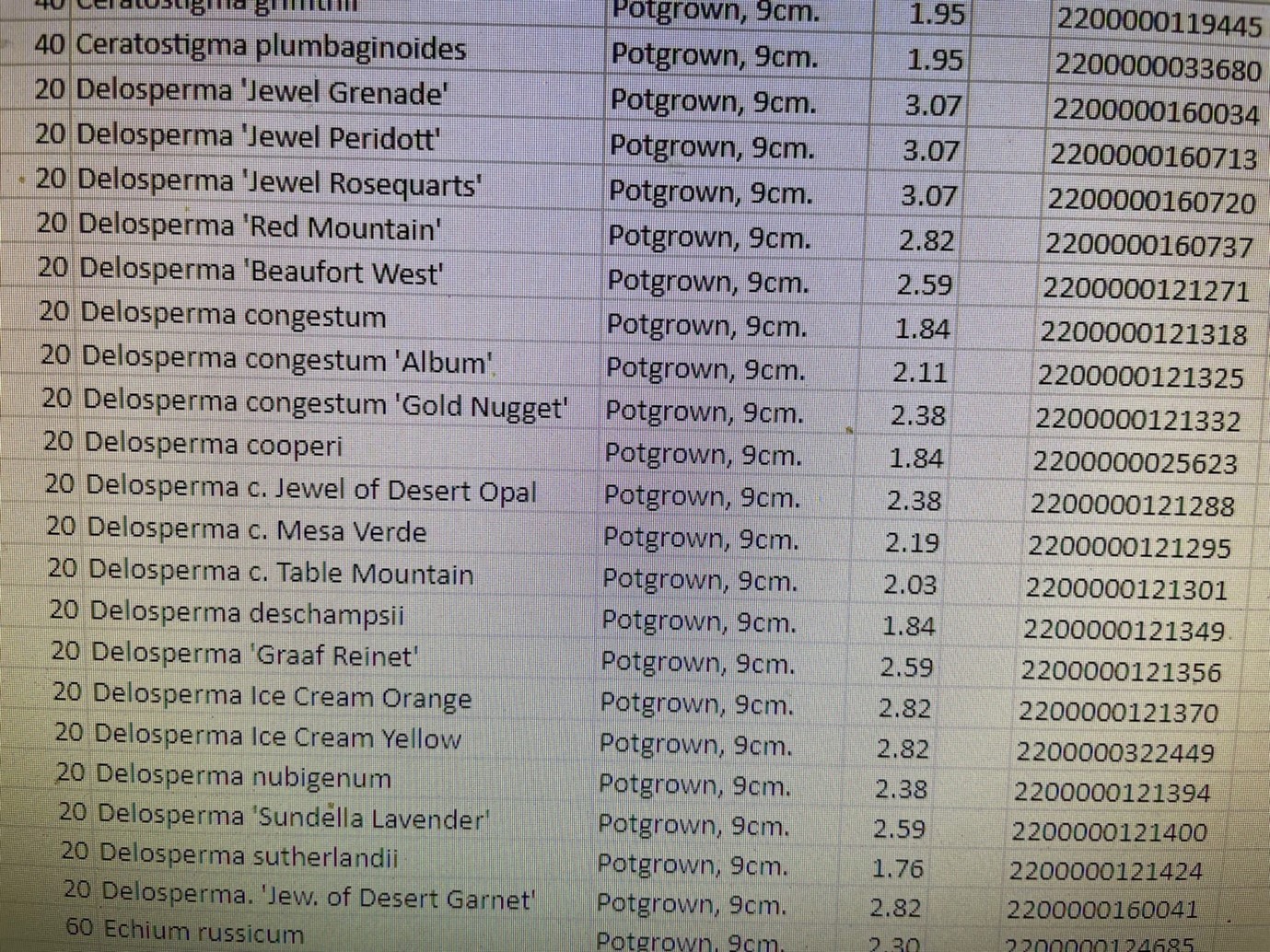A Month of Colour, Smell…
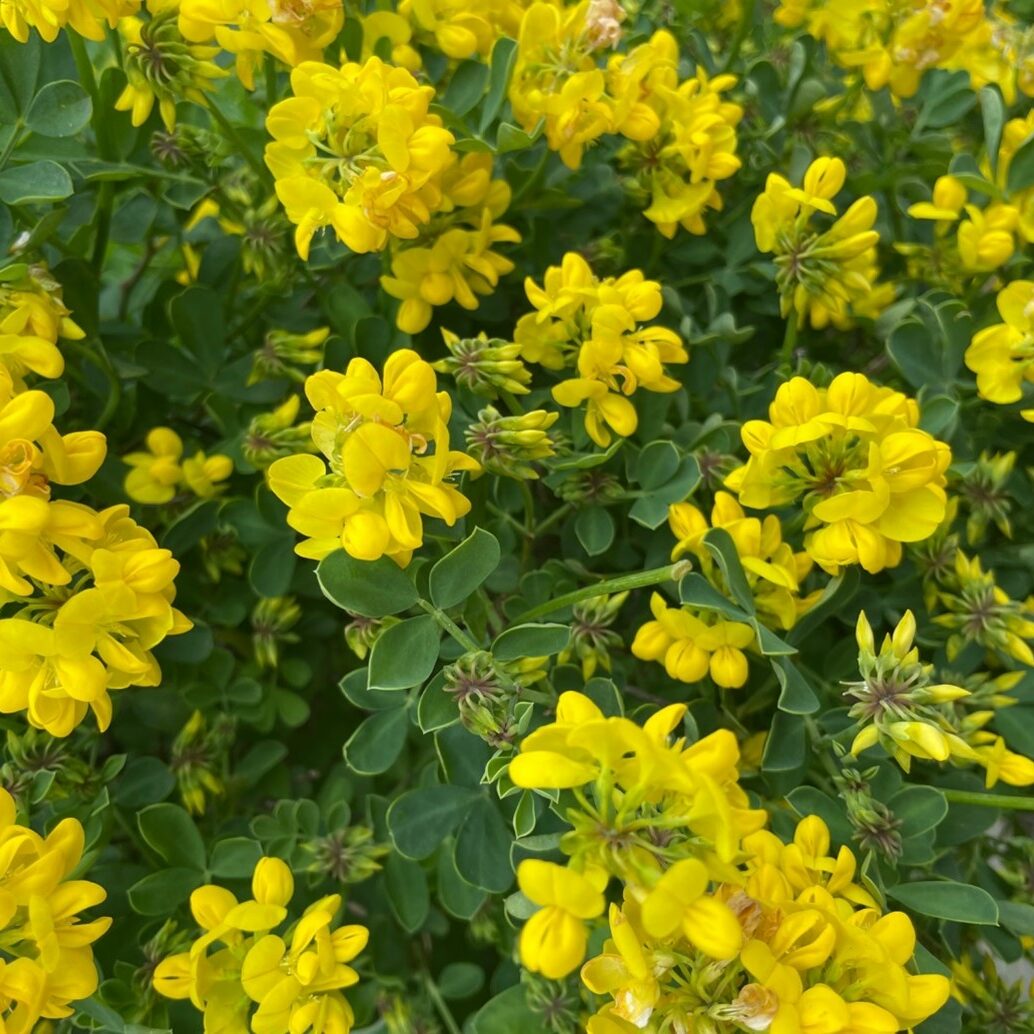
In our car park are a group of plants often commented on at this time of year, they are seedlings of a Coronilla “Brockhill Blue” that grew nearby, planted in 2005. These seedlings are quite different to the original parent plant that has long since perished. These self-seeding shrubs are an improvement on the parent plant, very florific at a time of year when not much is flowering. The scent is present, but not as strong as some Coronilla. The habit is somewhat floppy, which is probably why these plants aren’t seen for sale often, they present terribly in a pot, all lop sided. It is a shame the range of plants available for gardens is dictated by how plants look in a pot. We have a limited number for sale each year as a result.
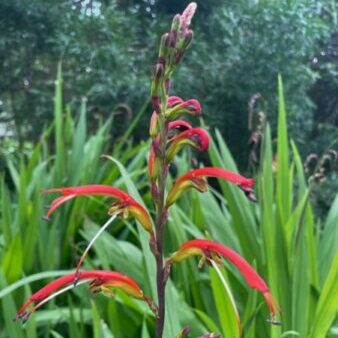
In the South African area you will see Chasmanthe species, members of the Iris family just starting to flower. We have several accessions of Chasmanthe ranging from commercially sold material to wild sourced plants and even a group seized from the Tresco helipad. Our gardener Indi Wyatt saw many wild-looking plants on Tresco whilst there on work experience two weeks ago. They flower very early in the season, looking like ladders of flower before seeding and disappearing back below ground.
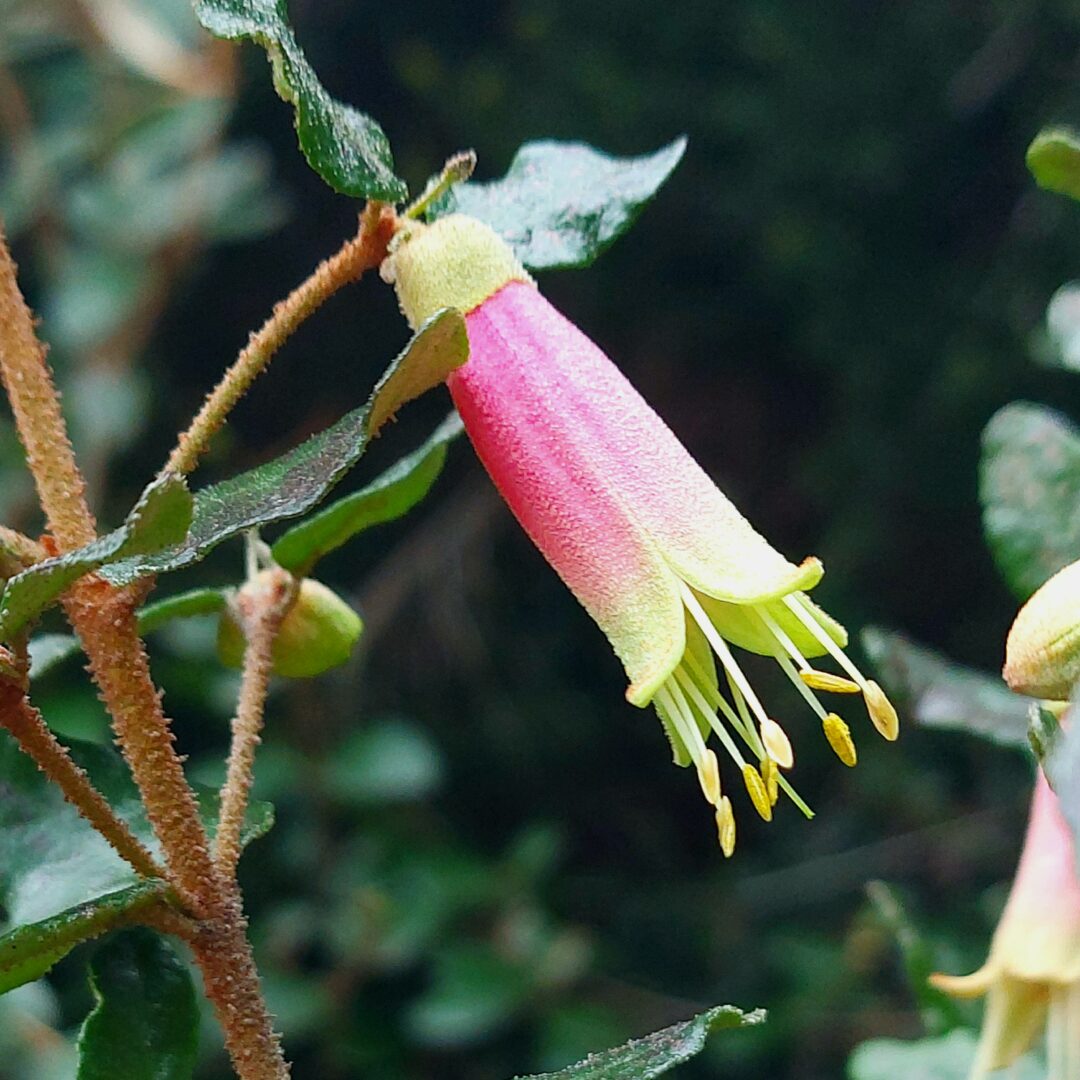
Late winter and early spring is a good time to see the flowers of Correa, a difficult to grow genus from Australia. Correa don’t like the cold, and just like Coronilla the best species look dreadful in a pot, falling about all over the place. Correa “Marion’s Marvel” has been at VBG since 2001. It is a hybrid plant first noticed in an Australian garden, now widely sold.
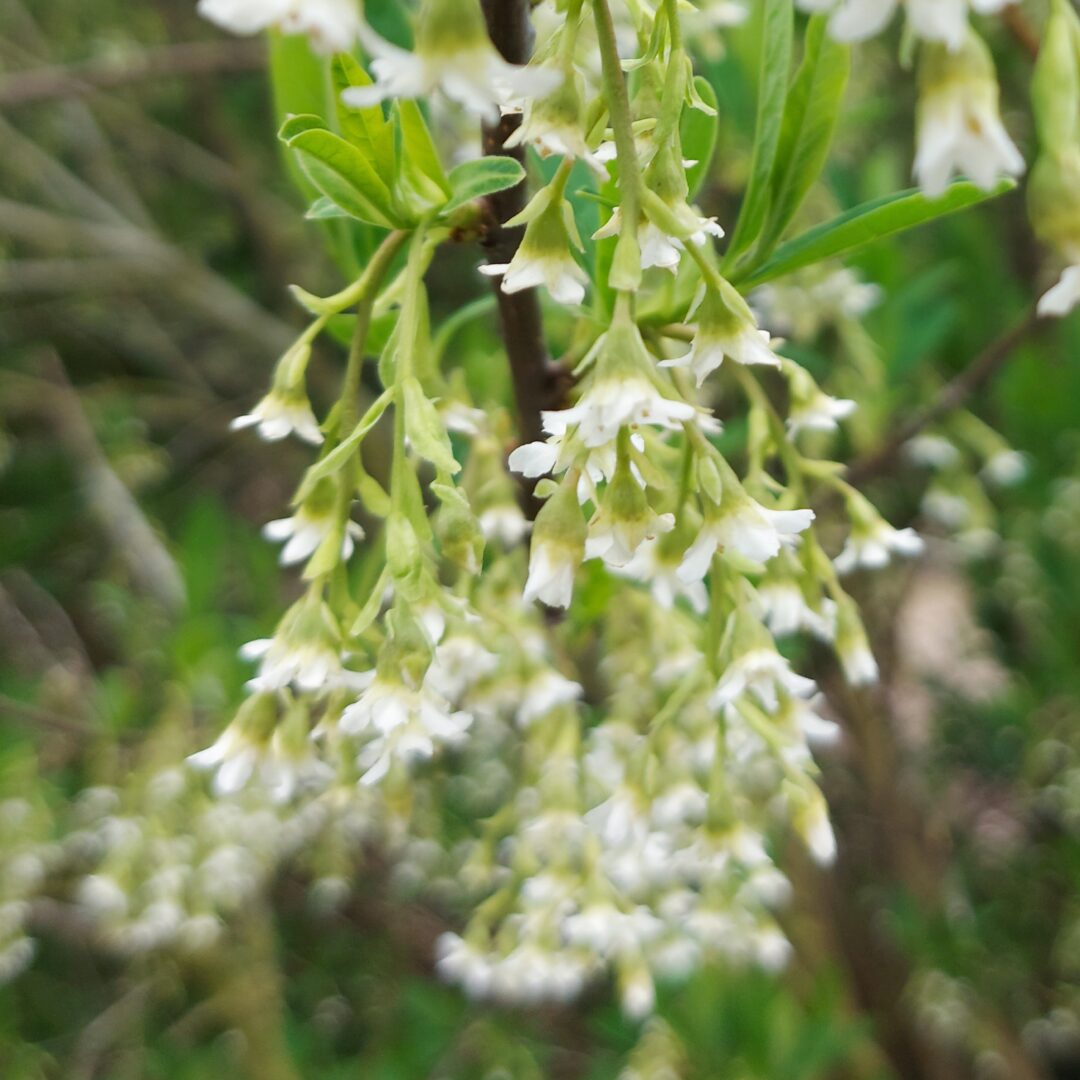
An early flowering shrub from our Medicinal Garden, Oemleria cerasiformis is flowering. This is highly scented, remarkable from such small flowers but produced en-masse. We include it in our Medicinal Garden as it has been variously used as a natural remedy by the indigenous people of North America for everything from tuberculosis to skin rashes. There are even claims of its potency as an aphrodisiac, but also as a laxative so caution should be taken – let the devil take the hindmost. Our plant is a male, as you can tell if you look closely.
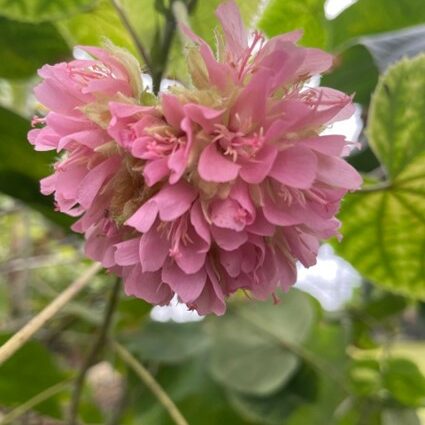
Another scented shrub from our Tropical House, Dombeya wallichii. It originates in Madagascar, and is one of the few plants able to cope with the wild temperature swings of our Tropical House, ranging from over 48°C (recorded on 19th July 2022) to 0°C (recorded 26 February 2018). Traditional botanic garden display houses mitigate temperature extremes with venting and the burning of fossil fuels. VBG uses zero fossil carbon for horticultural display, we see it as morally questionable and unnecessary.
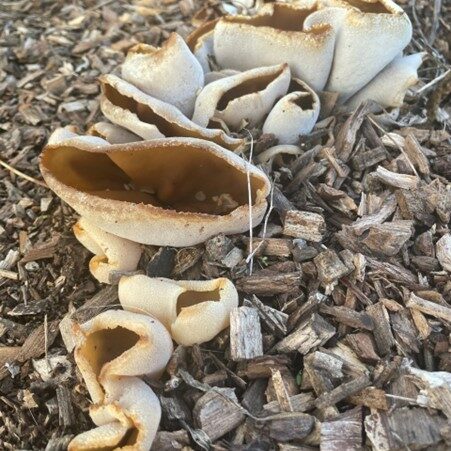
A recording of a new fungus for the Island has been made at VBG. On a woodchip pile in our nursery have sprung the fruiting bodies of an ear fungus that has been identified as Peziza arvernensis by Dr Colin Pope, who says it is a new one for him. The identifying characteristics are microscopic, requiring magnifications greater than x1000, yet the fungal cups are 10cm across.
…and New Plants, ‘Success can be failure and vice versa’
How and why plants arrive at VBG is a managed operation. Plants here have many roles and come through various routes. There is an accessions policy (this being the rules by which new plants come into the collection) to guide us away from the stamp collection, park, retirement home or you-name-it-other plant collection that we are not.
A principal guiding the accessions policy at VBG is that we grow plants on the cusp of hardiness, the better to show off our remarkable microclimate. The success of these experiments can be spectacular. Plants that have never flowered before out of doors in Britain may flower here first. Plants that couldn’t grow here 100, 50 or ten years ago may now succeed, and so indicate a changing climate. Such experiments will, by their very nature, result in failure, often at very high rates. In establishing a single species at VBG, over 200 individuals of Eucalyptus cypellocarpa were planted out. These dwindled to the handful we have now, one of which is the Champion (biggest) in Britain 21 years later. Had they all succeeded, that would have been a failure; we’d have chosen the wrong plant and had no garden left for anything else at all.
Sometimes we choose a whole genus for the experiment, and collect as many species as possible commercially or as cultivated plants and plant them out. In 2005 over 30 species of Aloe were acquired, 12 got as far as being accessioned, 5 remain at VBG, about 15% success rate.
Another, more complicated example is Lampranthus. In the case of this group, much of what is available is fiendishly misnamed. Many are not even Lampranthus. Many cultivars result from the fevered fantasies of nursery owners, putting out new cultivar names at every opportunity; synonymy has become a cottage industry. One nursery lists four Lampranthus cultivars, which when grown to maturity are all the same and not Lampranthus at all, but Delosperma. Sadly there is nobody that hasn’t been dead for a century brave enough to tackle the taxonomy of their family, the Aizoaceae. Should anyone be fool enough to try making sense of it all there is a world of pain, confusion and misery to be had based on counting loculicidal capsules. Regardless of the taxonomic maelstrom, in 2010/11 we amassed nigh on 70 accessions that realised half a dozen interesting, different, hardy at VBG plants.
In 2023 we are running a new experiment with Delosperma, the screen shot below shows some of the incoming taxa. These arrive as small plants in 9cm pots, each will receive a unique accession number at arrival that will remain with the plant throughout its life and beyond its death. The data concerning their origin is recorded, and the naming as supplied (they might not all be Delosperma, but will be recorded as received as such). Their planting date will be recorded, and their adventures at VBG, including whether they are attractive – not necessarily a given. Their populations will be noted, propagation too, relocation and dispersal. Photographs may be taken. Cultivation notes made. Perhaps verifications of names. Almost certainly death certificates issued: unless we have chosen the wrong genus to experiment with. Maybe two of the twenty. Two more than twenty years ago?
